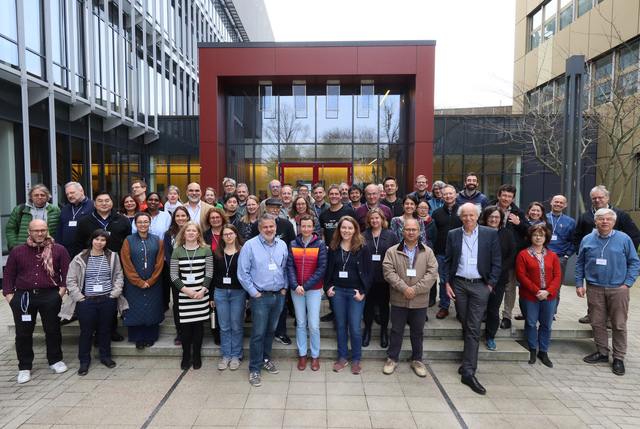
The WCRP ESMO core project is poised to embark on an ambitious new phase of Earth system modelling and observational activities, as outlined at the project's first official series of meetings at the German Climate Computing Centre (DKRZ) on 18-22 March 2024. During this first meeting, ESMO framed the future direction of the project, with an initial focus on three key aspects: better integration of observational and modelling activities, improved coordinated collaboration between different working groups and related WCRP initiatives, and the seamless incorporation of emerging topics within the existing workflow.
First, ESMO aims to bridge the gap between observational activities and Earth system modelling. This integration is crucial to produce more accurate climate projections and to understand complex climate dynamics. Prof. Susann Tegtmeier and Prof. Baylor Fox-Kemper, co-chairs of ESMO, emphasised the importance of this synergy and noted that the discussions during the meeting were instrumental in refining the project structure to better connect the observing and modelling communities. In particular, it was decided to create a new Working Group on Observations for Researching Climate, to focus on observational infrastructures, their accessibility and their integration with modelling activities and developments. A specific mandate for this working group would be to facilitate the production of data for specific communities and needs, and to be a focal point of contact for space agencies, in situ communities, industry and technology partners to communicate needs and requirements.
In relation to this last point, ESMO will particularly work to promote more coordinated collaboration among its working groups and between these groups and other related WCRP activities. Recent meetings have underlined the importance of such collaboration, with the newly formed ESMO Scientific Steering Group (ESMO SSG) identifying priorities and synergies to advance the work of each WG in an efficient manner, streamline common themes and reduce redundancies. A common set of guidelines and terms of reference, as discussed during the meeting, are currently under development to contribute to facilitating agreements and processes.
Finally, the project will intensify activities and focus on specific topics of emerging interest. Among the priorities and new pathways to improve the accuracy of climate projections, particular attention will be dedicated to measuring and monitoring carbon, energy and water cycles, improving the usability of observations in reanalysis, initialization and predictions, and promoting the sustainable integration of new technologies, including machine learning. The integration of machine learning techniques, in particular, is expected to evolve the way climate models are developed and refined, leading to more reliable and actionable climate data. A deliberate focus on new technologies is part of ESMO and WCRP's commitment to remain at the forefront of climate research and innovation.

